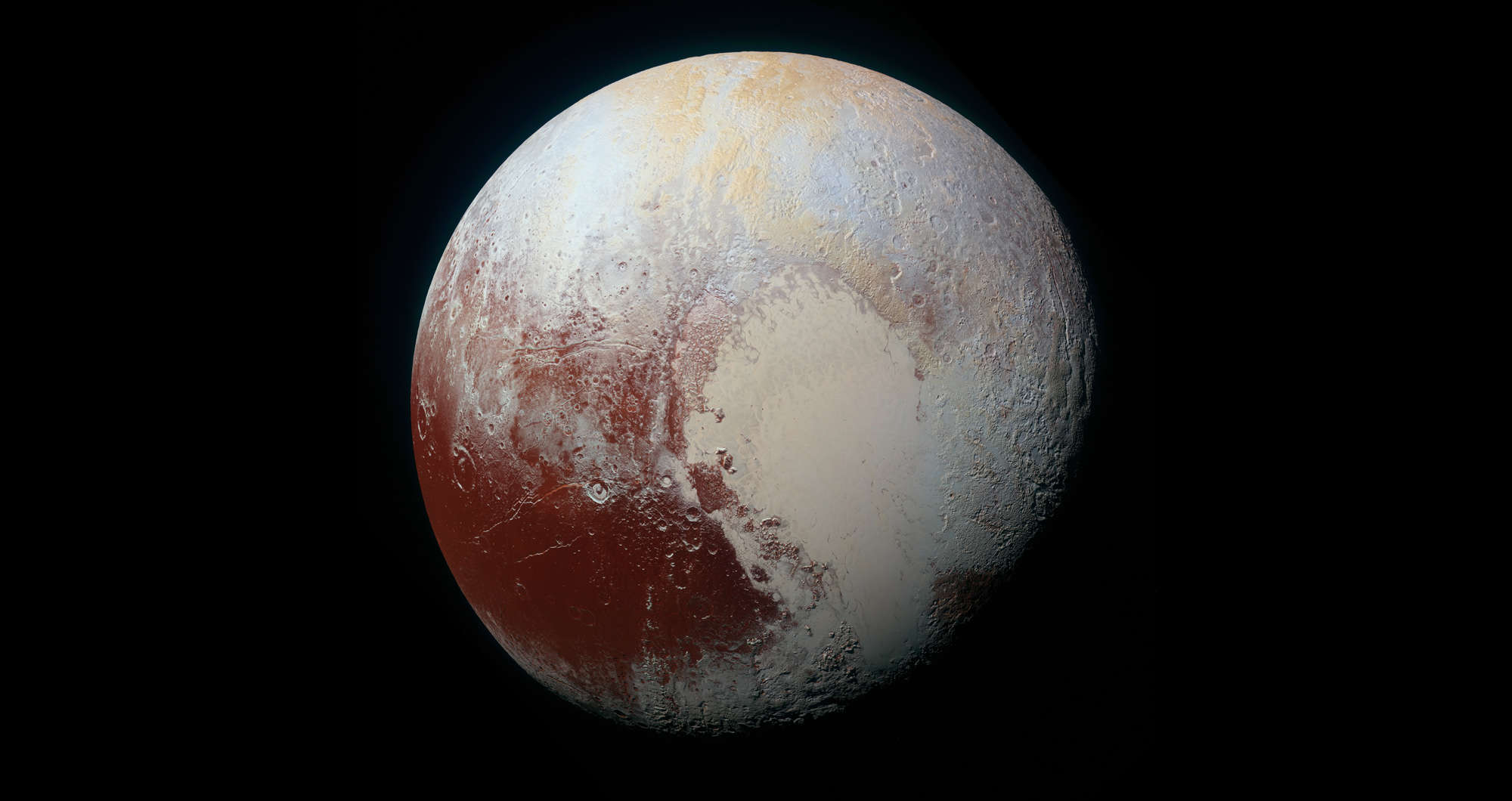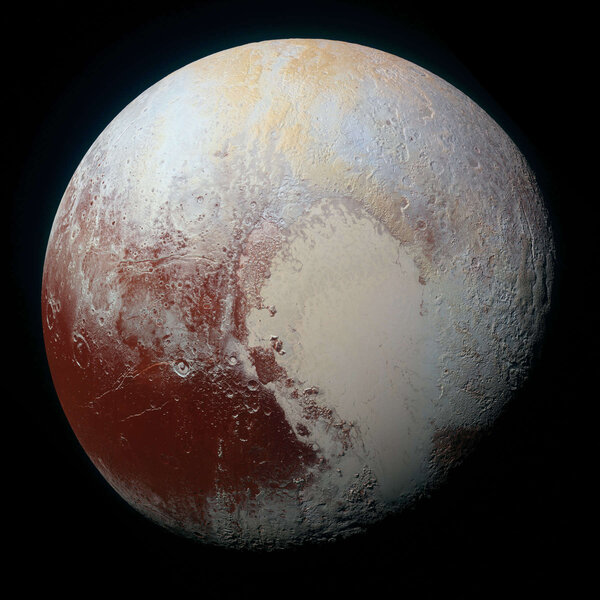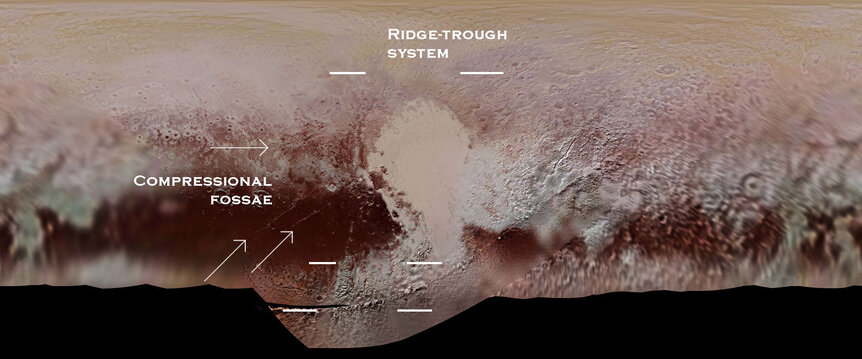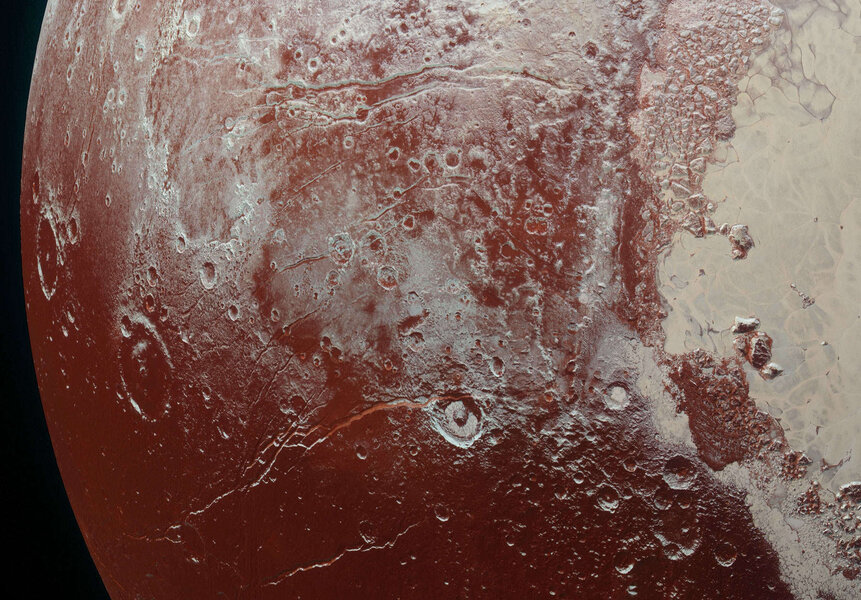Create a free profile to get unlimited access to exclusive videos, sweepstakes, and more!
Did Pluto start hot or cold?

Did Pluto form hot or cold?
That may seem like a weird question. After all, at 6 billion kilometers from the Sun, things are chilly.
However, creating a world involves a great deal of heat. The question is, where does it come from? And how did that affect the Pluto that we see today?
A new paper just published has an idea about that. And it turns Pluto inside-out. Kinda.
The way people have traditionally thought Pluto formed is what's called a "cold start." 4.6 billion years ago it grew as objects made of rock and ice in the outer solar system collided together relatively slowly. These would have had small amounts of radioactive materials in them, blown into our solar system by nearby stars even as the Sun was forming. As this material (mostly aluminum-26) collected, it warmed the growing proto-Pluto's interior, causing it to melt from the inside out.
That would create a subsurface ocean over a rocky core and below a thick shell of ice. At first the increased heat caused the ocean to grow deeper, but that radioactive heat source didn't last long, decaying in only a few million years. At that point Pluto would begin to refreeze, this time from the outside in.
The new idea is called a "hot start." In it, the icy bodies collecting to form Pluto have enough energy when they smash together (and continue to rain down over time) to melt them from the start. In this case, by the time Pluto reaches its current size, it would have had an ocean on the surface. In this case the ocean started out deeper, and once the bombardment stopped (and the radioactivity decayed away) Pluto would freeze from the outside in, and the ocean thinned as it froze.
By the way, despite its terrible distance from the Sun, Pluto still has a subsurface ocean today! The evidence for this is indicated by features seen in Sputnik Planitia, the western half of the giant heart-shaped region on Pluto. It's covered in nitrogen ice that's warm enough to create segmented ice on the surface, and there's evidence of cryovolcanoes — volcanoes that spew out water instead of lava.
Both the hot and cold star ideas predict that Pluto has that subsurface ocean even today, but the two methods produce different features on the surface of Pluto. The key part here is that when water freezes it expands (because it forms a crystalline ice structure), and when ice melts it shrinks — so keep that in mind.
If Pluto started cold and then heated up, like in the traditional model, as it melted in its interior it shrank. The ice above it would shrink as well, and you'd expect to see compressional features on its surface, like fault lines and folding of rocks.
If it started hot and then froze, the opposite happens: It expands, and you expect to see evidence of stretching of the surface (what are called extensional features).
When the New Horizons probe flew past Pluto in 2015 and took all those amazing images, what it sent back was evidence of lots of extensional features, but only fairly ambiguous evidence of compression. So, this supports the new idea of a hot start.
Examples of the extension are seen to the west of Sputnik Planitia; as the surface expanded it stretched, creating long linear cracks in the surface called graben and fossae.
There's also a very long feature called a ridge-trough system that runs roughly north-south. It's old; Sputnik Planitia sits on top of it, so it's at least older than that. It's also an extensional feature, and the fact that it's old is important too, showing that extension was happening on Pluto 4 billion years ago or so, around the time predicted by a hot start.
A hot start implies that Pluto formed quickly — growing from 600 km to its current size of over 2,300 km — in less than 30,000 years! Otherwise the heat would radiate away, and Pluto would have frozen between impacts. It probably began as a chunk of material a hundred or so kilometers across which formed very rapidly as material in the outer solar system clumped together. Then it slowed a bit as material thinned out, until it got to that 600 km size, whereupon it had enough gravity to actively draw material in. It's incredible to think it could've more than tripled its diameter (gaining over 50 times in volume!) in such a short time.
This new idea predicts that this sort of hot start works for objects about half the size of Pluto and bigger, in which case other objects out there in the Kuiper Belt past Neptune may have formed this way. If so, these objects should be depleted in nitrogen and carbon dioxide; they would have bled away from the surface oceans and escaped in the lower gravity (Pluto has enough gravity to hold on to its own supplies). Confirmation or refutation of that will have to await detailed observations of these bodies.
We have pretty good telescopes here on Earth, but Pluto and other Kuiper Belt Objects are small and very far away. Without New Horizons we'd never know which of these two hypotheses was more consistent with what's on the surface. There really is no substitute for being there.

















